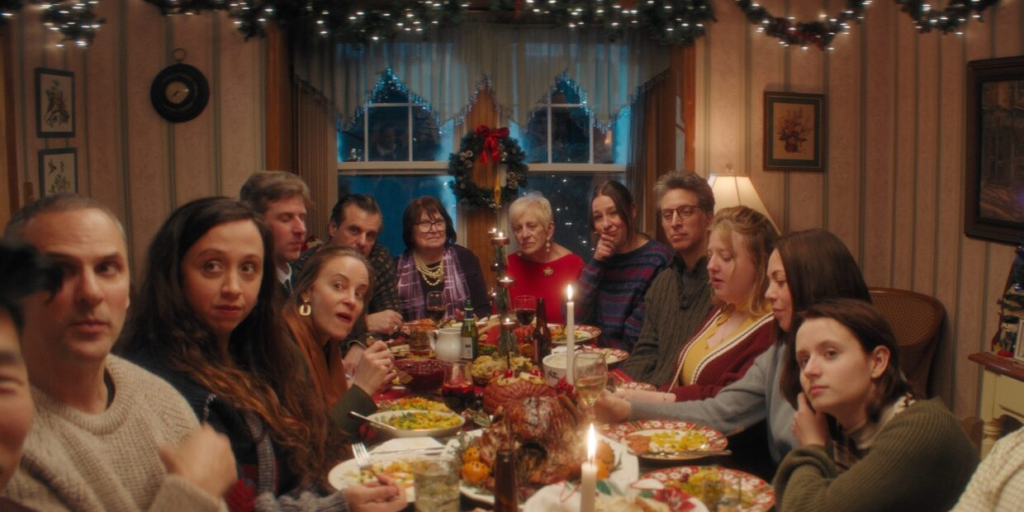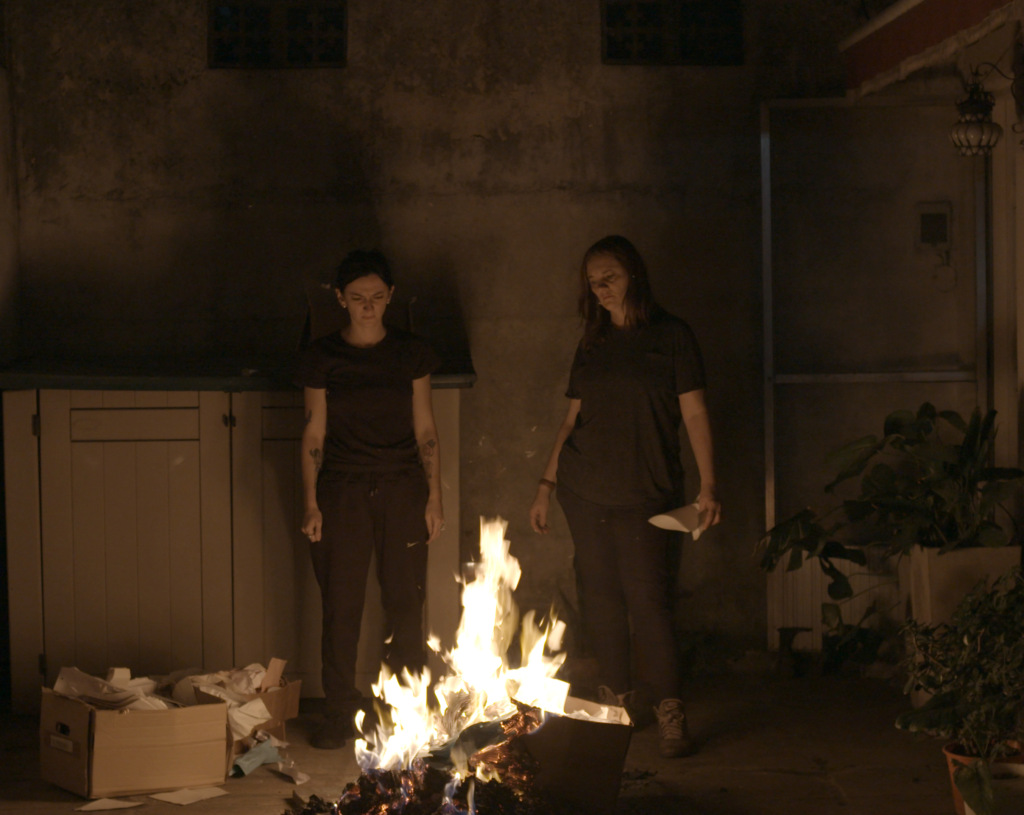Created in 1968 by the French Directors Guild, the Quinzaine des cineastes (formerly known as the Quinzaine des réalisateurs), or the Directors Fortnight, aids filmmakers from around the world and contributes to the discovery of their filmographies to a broader audience. They have an eclectic slate covering many perspectives from various styles, ranging from surrealistic to social-realist and experimental. This section of the Cannes Film Festival tends to showcase the new exciting voices of cinema’s future, and (I think some of the names that were a part of this year’s Quinzaine, like Joaquín Cociña, Cristóbal León, and India Donaldson, can be such.) In this capsule review piece, I will discuss three films I saw from the festival’s section: Christmas Eve in Miller’s Point, Savanna and the Mountain, and Something Old, Something New, Something Borrowed.

Christmas Eve in Miller’s Point (Directed by Tyler Taormina)
The first film in this capsule review is Christmas Eve in Miller’s Point from Tyler Taormina. It is an ironic comedic piece that constantly teeters between an indie holiday hit and a conflictless miscalculation of tones. The holiday season arrived early in Cannes, although the hot summer weather didn’t change one bit. Although I wasn’t particularly aching for that holly, jolly cheer at this point in time, it sure is welcoming. If I’m being honest, it is quite strange to see a Christmas film not only at the Cannes Film Festival but also at this time and in this weather. But the programmers at the Quinzaine des cineastes have offered to give one of their spots to Taormina and crew to deliver a “warm up” for December.
Rather unfortunately, the majority of Christmas Eve in Miller’s Point doesn’t manage to capture the feeling of warmth and melancholy that arises during the Holiday season; Taormina opts for a narrative without a precise lead or tone, which keeps the audience away from the tenderness we were expecting from the feature. The story, or lack thereof, is set in Long Island, New York, following the Italian American Balsano family. They spend the night of Christmas Eve in unison, celebrating the Holidays in the matriarch’s (Mary Reistetter) house. However, this may be the last of this sort of gathering, as Grandma Antonia’s health is deteriorating rapidly.
As each family member deals with their problems and blues, they question the ties that bind them. They ponder the separation and loss of tradition that might occur in this circumstance. Does the house itself have the power to unite this fractured family? Or do they feel compelled to continue without it? From that specific angle, I believe most people can relate to that scenario; something similar happened to my family, and somehow, the holiday season hasn’t been the same. But Christmas Eve in Miller’s Point loses its way amidst the snippets that cover family conversations, which lead nowhere, and overwrought deadpan comedy, which doesn’t land. The performances fit Taormina’s vision of an odd, funny, and brooding Christmas Eve dinner.
There’s a tactility in their chemistry that allows you to sense the emotions scattered across the canvas. However, none end up engaging enough to get into the emotional core that Taormina wants to show near the end. The film’s sweetness isn’t artificial, but the nostalgia it wants to bask in does have specs of such, which diminishes the Holiday season cache.
Grade: C-

Savanna and the Mountain (A savana e a montanha) (Directed by Paulo Carneiro)
The second film in this capsule review piece is Savanna and the Mountain (A savana e a montanha) from director Paulo Carneiro. It is a stylistically interesting picture in its combination of documentary and narrative feature filmmaking with some small elements of magical realism scattered across the canvas. It is a portrait of a small town slowly crumbling. Still, its people are holding their might against the mining operations occurring in Covas do Barroso, a village in northern Portugal. This issue has happened for the past few years, and the rest of the world doesn’t know about it.
This is Paulo Carneiro’s shout to make sure people realize what is happening and how similar situations are happening in other places worldwide. The townsfolk are fighting against a company called Savannah Resources, which is creating lithium queries and looking for a way to rebuild the village based on those actions. This is all seen from the perspective of the townsfolk, as the actual residents are cast in the project, which gives Savanna and the Mountain a nice touch of importance and thematic weight with a bigger personal layer from the people involved’s point of view. They play different versions of themselves with more profound discontent and disquietude as the denizens travel across the grass-covered plains and rocky steppes.
Their angst and frustration are front and center. The company sends messages about revitalizing job creations and giving them great chances, yet most people are skeptical about these so-called “empathetic communications”. That is why they take matters into their own hands. Carneiro is motivated to depict this development artistically, keeping the political fury present. He does so by not only using vivid imagery that shows the place’s ins and outs but also adding folk songs to the film, which serve as changes with a rebellious tone. And Carneiro doesn’t sugarcoat it; these songs contain very on-the-nose lyricism, for better or worse.
His play’s style sometimes falters as the structure grows creaky and repetitive, often keeping the audience not so much at a distance but without a precise narrative hook to latch onto outside of the mutinous story elements. For most of the film, I wasn’t entirely captured by the narrative presentation of the picture, even though its cinematography is very vivid due to the realistic portrayal of life – and the injustices occurring – in that small town. Nevertheless, the power of its messaging remains intact. The atmosphere is filled with tension and resistance. Paulo Carneiro culminates on a solid note that leaves the audience with doubts about how everything is still, to this day, going on.
Grade: C

Something Old, Something New, Something Borrowed (Algo viejo, algo nuevo, algo prestado) (Directed by Hernán Rosselli)
The third (and final) film in this capsule review piece is Hernán Rosselli’s exciting Something Old, Something New, Something Borrowed (Algo viejo, algo nuevo, algo prestado). It is a crime drama with a neo-noir background that isn’t explored due to its focus on the personal and meditative – a blend of elements and dark tones that borrow from a variety of genres, most to its favor, in a way that demonstrates the Argentinian director’s playfulness behind the camera. The film follows the Felpeto family, who are struggling to cope with the death of the patriarch and the underground lottery business that he has left behind – the matriarch, Maribel, now has to handle it forcefully.
The issues between the family arise not only in their conjoined grief but also in the chance that the police might raid them, as has happened to the other illegal businesses that were in contact with the Felpeto. The trepidation comes from their fear of losing it all at a time of sheer frustration and astray amidst passing. In case the worst-case scenario occurs, they burn files, destroy records, and hack into the patriarch’s computer to see if he has money tied up in other dangerous places they don’t know about. This process takes many years of their lives. And we see it through old VHS tapes and camera recordings – hearing the minute details through Maribel’s narration.
This combination adds a unique layer to the film and separates it from the many crime films released yearly. It is stripped down and more grounded, almost feeling documentary-esque at specific points. Rosselli remains very stylish in how he edits each sequence together, blending past and present through these recordings in ways that immerse you into this story full of uncertainty. In his attempt to break the mold of crime films, the Argentinian director doesn’t want to showcase any violence and keep his film tight and clean, focusing on the family preparing – and managing a forced-upon situation – for a detrimental shift in their lives.
Something Old, Something New, Something Borrowed’s impact might get knocked down during its last couple of minutes, with an ending that might leave many, including me, looking for a deeper resolution after seeing ten years of their lives encapsulated across such old-school recordings. But the project remains entrancing mostly due to Rosselli’s poignant portrait of a family portrait. At a time of conventionality, we come across yet another director from Argentina who wants to reinvent or experiment with genres that, for the most part, have circled around the same tropes for years.
Grade: B





